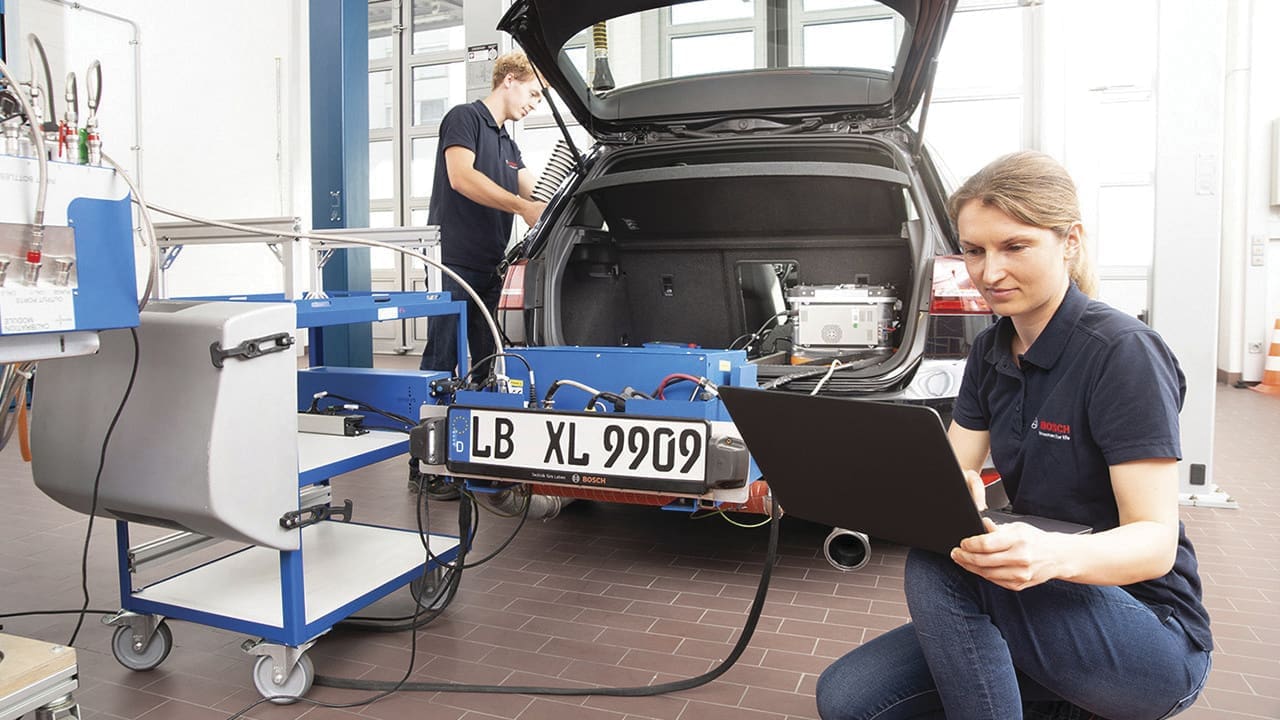
Air is composed of approximately 80 per cent nitrogen and 20 per cent oxygen, and at normal temperatures, no conditions exist to cause the two gases to combine. But in temperatures at which combustion of diesel fuel takes place, above 1,200 degrees Celsius, three nasty oxides of nitrogen can be formed, with the highest temperatures producing large amounts of nitric oxide, NO2, the one that creates the greatest health problems for humans. Higher NO2 emissions are now known to result from the increasingly high-power outputs of today’s turbodiesel engines, where the higher cylinder pressures and temperatures involved mean that 2.0-litre TDI engines that once produced 138bhp now deliver over 200bhp and produce more NOx than engines in a lower state of tune.
What’s come out of other recent studies of NOx production is that spikes of high NOx production occur in fairly specific conditions, mostly when the accelerator goes hard down, when engines are asked to rapidly produce high power. NOx problems also occur when engines are cold, but mainly because the exhaust treatments for NOx removal are ineffective, since the chemistry involved just doesn’t work at low temperatures. So faster engine warm-up is being engineered into today’s diesel engines, to help reduce NOx, but also reduce cold engine particulates, and improve their removal in DPF systems. But better ways of reducing NOx emissions are being continuously explored and last year two new approaches to the problems were revealed, from diesel specialist Bosch, and from Loughborough University, each focusing on different aspects of NOx control.
Loughborough University’s novel approach relies on improving the performance of SCR ñ Selective Catalytic Reduction. This NOx control system now features in most new diesel engines, and uses AdBlue liquid to generate ammonia that, with the help of a catalyst, turns NOx into harmless nitrogen and water. The main drawback of SCR is that AdBlue chemistry, particularly ammonia generation, only functions effectively at high exhaust temperatures over 250 degrees Celsius, and works poorly during stop-start commuting travel, and in urban areas where NOx pollution is most severe. Loughborough University researchers have developed AdBlue conversion technology that uses waste engine heat to help release the ammonia from it at lower exhaust temperatures, greatly extending the temperature range in which SCR systems are effective. Ammonia Creation and Conversion Technology (ACCT) as it is named, was initially tailored for HGV diesel engines, but is suited to all diesel engined vehicles. It enables SCR systems to work effectively at as low as 60 degrees Celsius and is active throughout the new RDE real-world drive cycle, with significant reductions in NOx emissions.
Bosch’s new system is somewhat different in focus, employing a combination of updated diesel engine technology in a number of areas. Its thermal management system closely controls EGR (exhaust gas recirculation) operation and using optimised turbochargers allows NOx control systems to work more effectively when engines are cold, but significantly also during hard acceleration at high power, when the highest NOx emissions are generated. Other changes Bosch introduced include finer atomisation of fuel, and a process of engine downsizing, with Bosch’s base 2.0-litre development engine scaled down to 1.7-litres, without any loss of power output. Test vehicles equipped with the technology have achieved average NOx emissions of as low as 13 mg/km in testing against current EU6-RDE requirements that allow a maximum of 168gm/km. An independent analysis of air quality around the Neckartor air quality monitoring station in Stuttgart, which is notorious for its high ambient NOx values, showed that diesel vehicles equipped with this latest Bosch exhaust technology could maintain air quality within the latest EU limits.
It’s unimaginable that these two new approaches are not being further developed with car makers, although in secrecy, and integrated into their new and updated diesel engines. These could create the vital breakthrough that would allow our favoured form of power to shed the unfortunate ìdirty dieselî tag and regain its rightful place in the car market.
© Motorworld Media 2023
Registered Office: 4 Capricorn Centre, Cranes Farm Road, Basildon, Essex. SS14 3JJ
Company Number: 8818356
Website designed by Steve Dawson